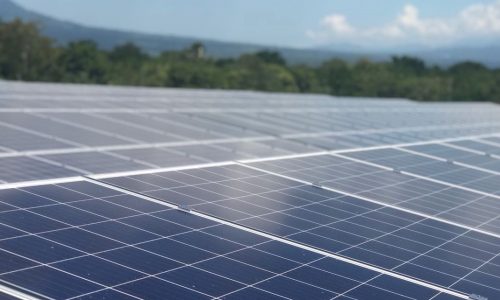The National Hydrogen Strategy, formulated by the Ministry of Energy and Mineral Resources (ESDM) in Indonesia, projects a substantial increase in demand for low-carbon or green hydrogen from 2031 to 2060. The three major sectors driving this demand are transportation, energy, and industry.
Minister of Energy and Mineral Resources, Arifin Tasrif, emphasized the importance of developing low-carbon hydrogen in supporting global energy transition and contributing to climate change mitigation. He noted that while the utilization of low-carbon hydrogen is currently limited, it is expected to significantly grow by 2060.
To facilitate this growth, the ministry is commited to supporting hydrogen development through the establishment of regulations, technical standards, and safety measures that encourage investment. The ministry aims to drive the creation of reliable and integrated hydrogen infrastructure through collaboration with all stakeholders.
According to the net-zero emission (NZE) modelling conducted by the ministry, demand for low-carbon hydrogen is predicted to increase from around 0.2 PJ (equivalent to 26,000 barrels of oil) in 2031 to peak at 609 PJ in 2060.
The use of low-carbon hydrogen in transportation is expected to commence with 26,000 barrels of oil or approximately 0.04 TWh for truck transportation in 2031. This demand is forecasted to rise significantly to 52.5 million barrels of oil or about 89 TWh for shipping and truck transportation by 2060.
In addition to the ministry’s modeling, the International Energy Agency (IEA) projects Indonesia’s low-carbon hydrogen needs will surpass 208.3 TWh by 2060. IEA anticipates that the rapid development of low-carbon hydrogen in Indonesia, dominated by the power generation sector (used in the form of ammonia for co-firing), transportation sector (in the form of hydrogen and synthetic fuels), and the industrial sector, will occur after 2030.
Pertamina roadmap
Indonesia’s state-owned oil and natural gas corporation, Pertamina, has also outlined a roadmap for domestic demand for green hydrogen and green ammonia. The roadmap presents two scenarios:
- Low Adoption Scenario (Scenario 1): Estimates low-carbon hydrogen demand reaching 2.1 MTPA as fuel for heavy-duty and medium-duty vehicles by 2040.
- High Adoption Scenario (Scenario 2): Foresees hydrogen demand reaching 8.7 MTPA, assuming the use of low-carbon hydrogen in the power generation sector (Pertamina NRE, 2023).
Globally, Germany leads in the commitment to hydrogen development, with an investment of US$ 10.3 billion in 2021, while Japan represents the largest commitment in Asia, amounting to USUS$ 6.5 billion.
State electricity company PT PLN has successfully established a Green Hydrogen Plant, producing 199 tons of green hydrogen. This accomplishment positions Indonesia among the top 10 largest producers of green hydrogen globally.
The IEA highlights both the advantages and challenges of green hydrogen. Sustainability, excellent storage capabilities, and versatile applications across various sectors stand out as advantages. However, high production costs, energy consumption, and safety concerns related to hydrogen’s flammable and volatile nature are notable challenges.
Challenges to hydrogen energy
Despite these challenges, IEA underscores the pivotal role of hydrogen in the future of clean energy. Its potential applications include power generation, water desalination, energy storage, and addressing decarbonization challenges in heavy-duty transportation sectors such as aviation and maritime.
Ongoing projects, like Hycarus and Cryoplane supported by the European Union, aim to integrate green hydrogen into commercial aviation. Similarly, India has committed to developing hydrogen-based vehicles through its national green hydrogen mission.
In the Indonesian context, PLN’s efforts in hydrogen production involve diversifying its production, utilizing 75 tons of green hydrogen annually for power plant operations and allocating 124 tons for various purposes, including transportation.
The total production of green hydrogen by PLN, amounting to 199 tons per year, represents a significant contribution to Indonesia’s efforts to achieve carbon neutrality.
As a reference, the following is the data for the top 10 countries with the largest Green Hydrogen Plant (GHP) production, along with growth estimates from various countries worldwide.









